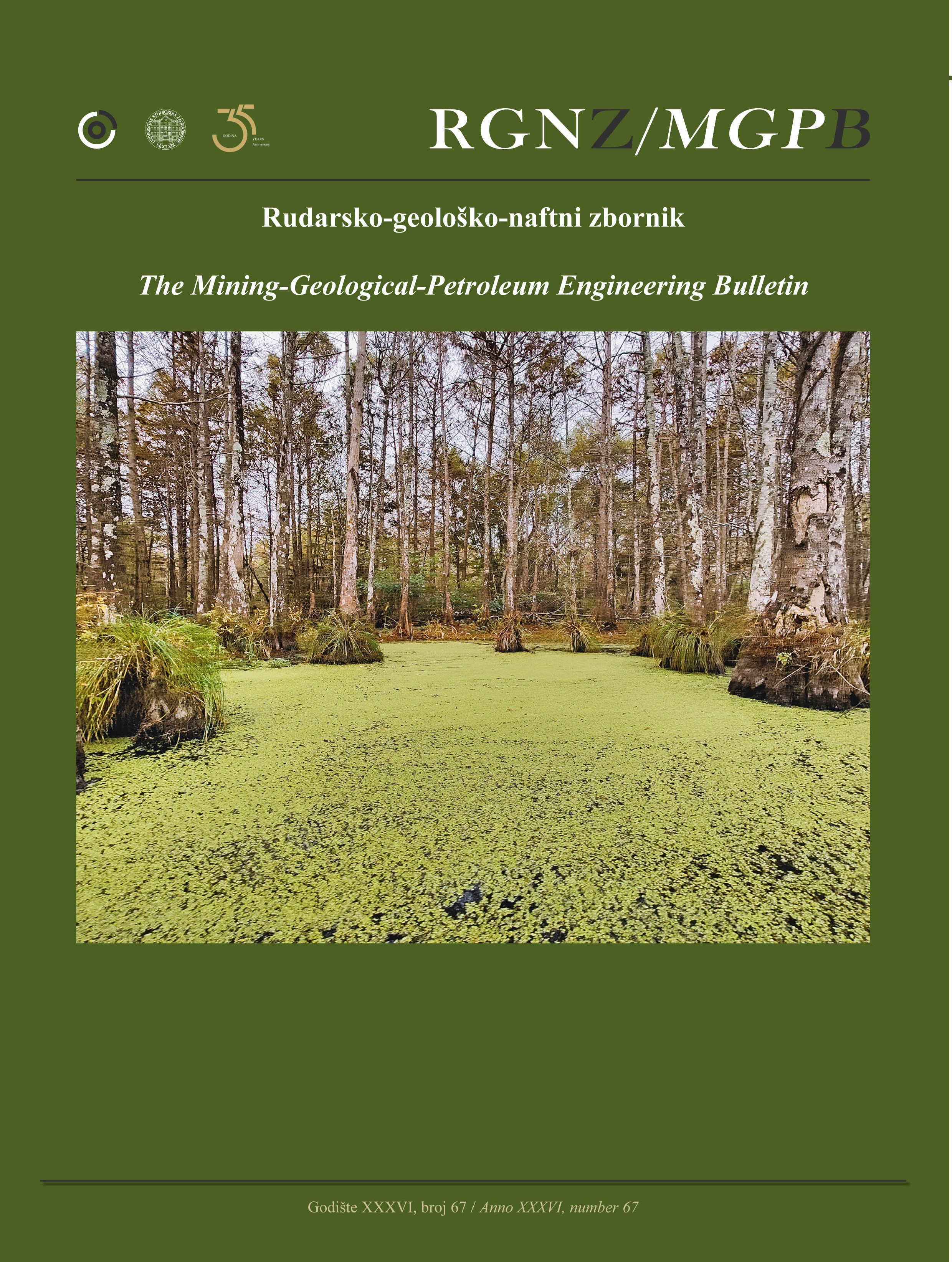Assessment of ultra-low frequency (ULF) geomagnetic phenomena associated with earthquakes in the western part of Java Island, Indonesia during 2020
DOI:
https://doi.org/10.17794/rgn.2024.1.6Keywords:
earthquake precursor, ULF emission, wavelet transform analysis, detrended fluctuation analysisAbstract
Ultra-low frequency (ULF) geomagnetic analysis is a robust method for earthquake (EQ) forecasting. We conducted a simultaneous study of EQ precursors around the western part of Java Island in 2020 using wavelet transform (WT) and detrended fluctuation analysis (DFA) methods. ULF geomagnetic data (March to December 2020, 16:00–21:00 UTC or 23.00–04.00 LT) from Lampung Selatan (LPS) geomagnetic station were used to assess the precursors. We analyzed four EQs with an epicenter distance (R) of around 100 km from LPS station and a magnitude (M) greater than 5 Mw. We analyzed changes in the SZ/SG values and α values from the WT and DFA analyses against the threshold (µ±2σ) to identify anomalies related to the EQs. The result showed that SZ/SG anomalies occurred simultaneously with a decrease in α values several weeks prior to probable source EQ when there was a very low geomagnetic activity (Dst ≤ -30 nT). The Mw5.4 (07/07/2020) EQ might be the main source that led to the appearance of the precursor since it had the highest magnitude and KLS values compared to others. The combined WT and DFA results showed anomalies 1.5–13 weeks before the Mw5.4 (07/07/2020) EQ. The results suggest that WT and DFA are suitable methods for detecting EQ precursors but more work is needed to link the precursors to specific EQs.
Downloads
Published
How to Cite
Issue
Section
License
Copyright (c) 2024 Cinantya Nirmala Dewi, Febty Febriani, Titi Anggono, Syuhada Syuhada, Mohamad Ramdhan, Mohammad Hasib, Aditya Dwi Prasetio, Hendra Suwarta Suprihatin, Suaidi Ahadi, Mohammad Nafian, Suwondo Suwondo, Faiz Muttaqy, Muhamad Syirojudin, Hasanudin Hasanudin, Indah Marsyam

This work is licensed under a Creative Commons Attribution 4.0 International License.
Creative Commons-BY
Authors who publish with this journal agree to the following terms:
In agreeing this form, you certify that:
- You read the ethical codex of the RGN zbornik available at journal web.
- You submitted work is your original work, and has not previously been published and does not include any form of plagiarism.
- You own copyright in the submitted work, and are therefore permitted to assign the licence to publish to RGN zbornik.
- Your submitted work contains no violation of any existing copyright or other third party right or any material of an obscene, libellous or otherwise unlawful nature.
- You have obtained permission for and acknowledged the source of any illustrations, diagrams or other material included in the work of which you are not the copyright owner.
- You have taken due care to ensure the accuracy of the work, and that, to the best of your knowledge, there are no false statements made within it.
- All co-authors of this submitted work are aware of, and in agreement with, the terms of this licence and that the submitted manuscript has been approved by these authors.
Publication licence
You retain copyright in your submitted work, according to journal license policy (CC-BY). By signing this form you agree that RGN zbornik may publish it under the publication licence. In summary the licence allows the following:
Anyone is free:
- To copy, distribute, display, and perform the work.
- To make derivative works.
Under the following conditions:
- The original author must always be given credit.
- The work may not be used for commercial purposes.
- If the work is altered, transformed, or built upon, the resulting work may only be distributed under a licence identical to this one.
Exceptions to the licence
In addition to publishing the work printed under the above licence, RGN zbornik will also enable the work to be visible online.
The journal editorial can change the licence rules anytime but it cannot retroactively restrict author(s) rights.


